- Home

You and your four-legged family member may disagree on what purpose a garden should serve. To you, a garden is a refuge filled with your favorite plants that complement the perfect outdoor living space. To your dog, a garden is a place to take care of business and hone his doggy instincts. And while it may feel like you’re waging a losing battle for control of the garden, don’t despair! There is still hope for a sustainable design that both you and your pup will love--one that can give long-lasting results, won’t break the bank, prioritizes health and safety--and not another petunia will have to suffer.
Here are 5 tips to design a dog-friendly garden with sustainability in mind:
Dogs love paths. Use their predictability to your advantage and install a path that allows them to patrol the perimeter without wearing down grass or trampling flowers. Consider using recycled rubber mulch. The material is soft enough for paws, large enough not to get caught in any fur, pet and people safe, deters weeds and is an overall durable material. But before purchasing large quantities, make sure your pup doesn’t have a penchant for chewing on rubber since it can pose a serious health risk if ingested.
When you do want to add variety and plant your favorite foliage, don’t forget about the border. Like paths, borders can serve as a guide that says: go here and not there. Think about a natural look with some strategically placed pieces of driftwood or large stones leftover from a construction project. And when planting along or close to the border, look for hardier plants that can withstand a bit of roughhousing (see tip #3, below).
Dogs will be dogs. As hard as it can be to bear in mind, your dog isn’t deliberately trying to spite you with that hole they’ve managed to add to your perfectly manicured lawn. It is simply your pup expressing one of those doggy instincts. So why not include a designated digging area for your dog? It can be as simple as a sandbox with high enough walls to keep the sand or dirt contained. Look for wood that’s reclaimed or FSC certified and naturally resistant to rot like redwood or cedar. You can even seal it with an environmentally-safe sealant to help make it last longer.
When you have your digging-approved area ready, the next step is getting your dog to use it. Try to understand why your dog is so excited about digging in the first place. Every dog is different; for some dogs, it’s about removing that topsoil to find cool ground, for another it might be the fun of digging for roots, or perhaps your pup just saw you digging and that’s why the poor petunia ended up as carnage. Once you’ve figured out what kind of digger you’ve got, then you can aim to replicate by adding shade, burying toys to be found, or assisting the master digger. If you do see your dog digging in a place you don’t want them to, redirect them to their approved site.
Planting when having a dog can feel like a challenge, but don’t view it as limiting--think of it as having the ability to be more creative while still being able to fit in landscaping essentials. Some dogs have absolutely no interest in plants, and then there are those dogs who see the world through their mouths, so it’s always better to err on the side of caution. Before purchasing, have a look at the list of plants considered toxic to dogs provided by the ASPCA.
For border planning, consider using hardy ornamental grasses or low shrubs. Once there’s the first defense, then less hardy plants can be considered. For new starts, like a vegetable garden, a raised bed can help deter any pup from investigating too closely. Plus, there are many other benefits to raised garden beds, like a natural deterrent to weeds and pests. Look to avoid using any chemicals that could be considered toxic to your pup. Some mulches, a variety of fertilizers, pest, and weed control can all be damaging to your dog’s health because of the chemicals and agents in the ingredients. It’s always a good idea to do some research before applying anything to your garden.
If you are still in need of variety and those delicate blooms are a must-have, go for hanging baskets and pots.
You’ll know if your dog has a favorite peeing spot if the grass is turning brown and dying. Concentrated urine can have enough nitrogen compounds that burn grass, which is why you can get those unsightly patches in an otherwise healthy lawn. Instead of having to constantly reseed, or apply fertilizers filled with chemicals, dedicate a small area for your pup’s business. Lay down an easy to clean base, like pea gravel, and train them to only pee there. For male dogs, a marking post would also be a good addition.
And yes, training your pup to go to a new designated area will take time, but your grass will thank you for it. Don’t get frustrated if your dog doesn’t catch on quickly since it’s a little like potty training as a puppy.
It’s not something any of us want to really think about, but dog waste leaves a rather large environmental footprint. Part of it comes from the impact of dog poop ending up in the landfill, and part of it comes from bacteria that the poop can harbor and spread. While composting is probably not the first thing you think of when disposing of your pup’s waste, it can definitely be done.
Concerns about composting dog waste stem from the worry that if the pile doesn’t get hot enough, it might not kill off any potential pathogens. To always be on the safe side, a fully composted pile should only be used for non-food gardens. That said, with the proper container and recipe, it is possible to create compost out of your dog’s poop.
If you're not convinced of setting up a doggy compost pile, consider using biodegradable or compostable poop bags. Even something as small as changing bags can help make less of a negative impact.
Bottom line: it is possible to create a sustainable garden design that both you and your dog will love. After all, long-term durability, a conscious effort to mitigate harm to your environment to ensure good health and safety, and affordability are all tenants of sustainability.

Shop the best high-performing gardening and outdoor products that impact your health, wealth, and the planet through their use.

Englander
In Stock

Englander
In Stock

Englander
In Stock
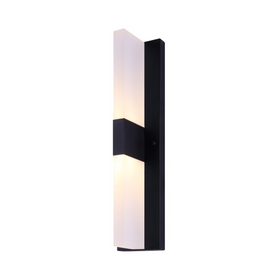
Canarm
Out of Stock
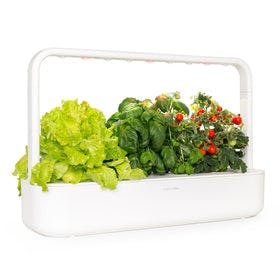
Click & Grow
In Stock
3 Colors
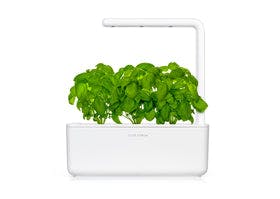
Click & Grow
In Stock
3 Colors

Englander
In Stock

Englander
In Stock
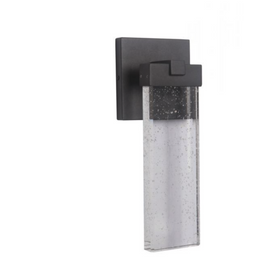
Craftmade
In Stock
2 Colors
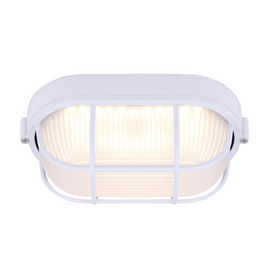
Canarm
In Stock